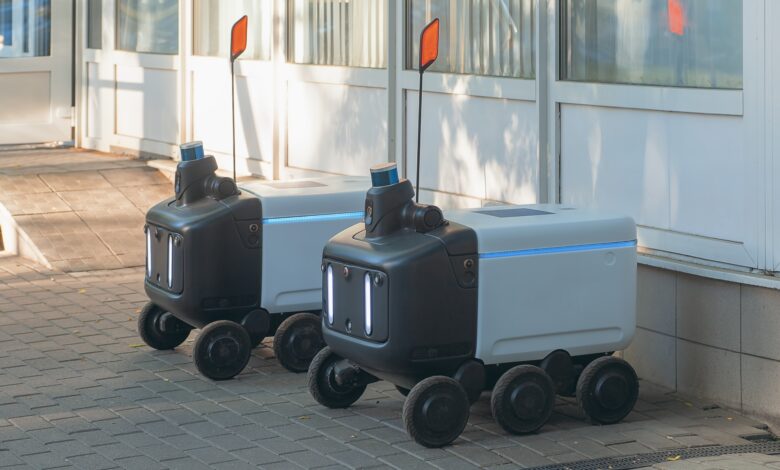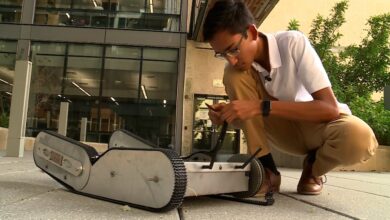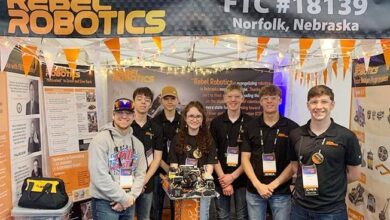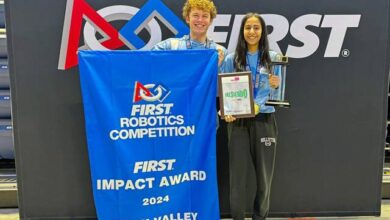Improved Trajectory Tracking for Car-Like Mobile Robots

In a recent paper published in the journal Electronics, researchers from China introduced a novel control scheme to improve the trajectory tracking accuracy of car-like mobile robots (CLMRs) in the presence of modeling errors and external disturbances. Their scheme combines an extended state observer (ESO) and a backstepping controller to estimate and compensate for the uncertainties in the system.
Background
CLMRs are a type of wheeled mobile robots (WMRs) that share a similar structure to cars, featuring rear-wheel drive and front-wheel steering. This design offers advantages such as high load capacity and reduced wear and tear, making them suitable for various applications in industry, defense, and agriculture.
One of the key research areas for CLMRs is their motion control, which encompasses tasks like path following, point stabilization, and trajectory tracking. Trajectory tracking, where the CLMR follows a desired path with high precision and real-time performance, presents the most challenging task.
The accuracy of trajectory tracking relies heavily on the mathematical model used to represent the robot’s behavior. CLMRs can be modeled dynamically or kinematically. The dynamic model considers the effects of inertia, friction, and tire forces, offering a more accurate picture of the CLMR’s motion state. However, this model’s complexity arises from its non-linear and coupled nature, requiring more system parameters and leading to a more challenging controller design.
On the other hand, the kinematic model simplifies the motion state to the position and orientation of the rear wheel, effectively ignoring dynamic effects. While this simplification reduces controller design complexity, it also comes at the cost of reduced accuracy. The kinematic model cannot account for real-world factors like modeling errors and external disturbances, which can ultimately degrade the trajectory tracking accuracy of the CLMR.
About the Research
In this study, the authors proposed a trajectory-tracking control scheme that improves the disturbance rejection capability of the kinematic model. The core idea involves considering these disturbances as a single “total disturbance” and expanding it into a new state for real-time estimation using a linear ESO. Linear ESO, known for its simple structure and easy parameter tuning, provides accurate disturbance estimates. Based on these estimates, a backstepping controller was designed to compensate for the disturbances and achieve the desired trajectory tracking for the CLMR.
The researchers first introduced the kinematic model incorporating disturbances and then split the complex system into two independent subsystems using output equations. This facilitated the design of individual linear ESOs for each subsystem, estimating the total disturbances affecting the CLMR’s motion.
The Lyapunov method was employed to prove the convergence of these observers, ensuring accurate disturbance estimation. Building on these estimates, a backstepping controller was designed to control the linear and angular accelerations of the CLMR. The Lyapunov method was again used to prove the controller’s stability. Finally, the control inputs were translated into practical commands for the CLMR’s actuators by calculating the steering angle and forward speed.
Furthermore, the authors evaluated the effectiveness of their scheme through simulations and experiments, comparing it with a conventional kinematic flat controller. They used a circular trajectory and added artificial disturbances in the simulation. In the experiment, factors like ground friction and sensor noise were considered as disturbances. They measured trajectory tracking errors, control signals, and disturbance estimates of the CLMR.
Research Findings
Simulations and experiments demonstrated that both controllers achieved trajectory tracking, but the proposed scheme exhibited superior performance in terms of accuracy and disturbance rejection. The newly developed controller significantly reduced longitudinal and lateral errors, especially under external disturbances. This improvement could be attributed to the faster regulation of forward speed and steering angle, crucial for disturbance resistance. The linear ESO in the novel scheme enabled real-time disturbance estimation and compensation, leading to a more robust system.
This enhanced performance holds significant promise for various CLMR applications, including autonomous driving, intelligent transportation systems, and mobile service robots. In complex and uncertain environments, the proposed control scheme can contribute to improved safety and efficiency of CLMRs, ultimately enhancing their autonomy and flexibility. Furthermore, the scheme’s underlying principles can be potentially extended to other wheeled mobile robots with appropriate modifications.
Conclusion
To summarize, the study acknowledged that the proposed scheme was primarily effective for low-speed CLMRs. This was because the model neglected the influence of tire forces on the system, which became more significant at higher speeds. Future research avenues could address this limitation by incorporating a dynamic CLMR model into the control scheme, potentially improving tracking accuracy in high-speed scenarios.
Additionally, further experiments were recommended to evaluate the scheme’s robustness and generalizability across different trajectory types such as sharp turns and sudden stops and environmental conditions including uneven terrain and slippery surfaces.
Journal Reference
Zhu, C.; Li, B.; Zhao, C.; Wang, Y. Trajectory Tracking Control of Car-like Mobile Robots Based on Extended State Observer and Backstepping Control. Electronics 2024, 13, 1563. https://doi.org/10.3390/electronics13081563, https://www.mdpi.com/2079-9292/13/8/1563.



